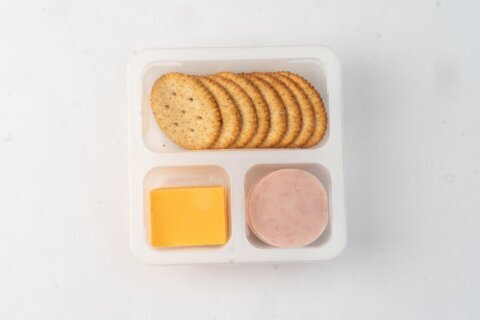Baking with whole grains is a win-win for health and flavor.
One of the open secrets among the country’s leading bakers is that whole-grain baked goods offer the ultimate win-win scenario: better tasting and better for you. However, if your idea of whole-grain baking is simply swapping the whole-grain flour of your choice into a recipe developed for all-purpose flour, you may not get the results you’re hoping for.
We tapped the minds of several expert bakers to reveal the top five things you need to know about baking with whole grains. With these five tips in your back pocket, you can relax and enjoy the art of baking, rather than the science.
1. The old rules about overmixing don’t apply to whole wheat.
Most muffin and pancake recipes caution readers not to overmix the batter because it can overdevelop the gluten, causing the pancakes and muffins to fall flat.
Whole-grain batters, however, are much more flexible. As demonstrated by America’s Test Kitchen, overmixed pancakes made with whole-wheat flour actually turn out fluffier than those made with all-purpose flour. This is because the bran and germ in whole-wheat flour cut through the elastic gluten strands, allowing the air bubbles to expand, creating a lighter, more voluminous product.
2. Adding more moisture helps whole wheat yeast recipes rise higher.
Some home bakers fear that swapping in whole grain flour might make bread too dense. But if you know a few tricks, the volume and texture can be quite comparable. We spoke with an expert at King Arthur Baking to get the scoop.
Their tests have found that up to 50% of the all-purpose flour in most yeast bread recipes can be substituted with whole wheat flour without a noticeable change in taste or texture. If you’d like to use even more whole wheat flour in your breads, the key is more hydration: King Arthur Baking recommends adding an additional 2 teaspoons liquid per cup of flour and letting the dough rest for 20 to 25 minutes before kneading to give it time to absorb the extra moisture.
When working with sprouted whole wheat flour, master baker Peter Reinhart suggests even higher hydration doughs, using nearly the same gram weights (90%) of water as sprouted whole wheat flour. This is because sprouted whole wheat flour (wheat grains that have been soaked, started to germinate and then dried and milled into flour) absorbs much more moisture.
3. Not all whole grain flour is created equal.
One key to maintaining structure when baking whole-grain breads is to opt for whole-wheat flour. Both whole-wheat flour and all-purpose flour contain powerhouse gluten-forming proteins called gliadin and glutenin, which help wheat-based doughs stretch and rise.
Although a handful of other grains also contain gluten-forming proteins, none seem to be quite as effective as gliadin or glutenin at giving structure to baked goods. While it is certainly possible to make delicious, gluten-free, whole-grain breads, they won’t have the same texture or fluffiness as loaves made primarily from whole wheat.
However, not all whole-wheat flours are created equal. Most whole-wheat flour at the grocery store is made from hard red wheat. It contains more protein than all-purpose or pastry flours, and has a sandy, beige color.
Whole-wheat pastry flour is made from a soft wheat, meaning it has a slightly lower amount of protein, making it well suited for cookies, pancakes and the like.
White whole-wheat flour, a favorite of many home bakers, is whole-wheat flour that’s made from white wheat rather than red wheat. The lighter color and slightly milder flavor make it a more inconspicuous substitute for all-purpose flour, especially when baking for eaters with suspicious palettes.
4. Whole-grain flour is a flavor-booster.
Rather than viewing flour as simply a blank slate, the best bakers and pastry chefs are leveraging the distinct flavors of whole grains to add another layer of flavor to their dishes.
— Oat flour can add hints of butterscotch to a recipe.
— Brown rice flour can lend a caramel flavor.
— Teff flour provides hints of cocoa.
— Sorghum flour and sprouted whole wheat flour add extra, subtle sweetness.
There are also a growing number of ancient wheat flours on the market, including one of our personal favorites, spelt flour. In the Oldways Whole Grains Council test kitchen, we tested one butter cookie recipe with five different types of flour, and the spelt version was the crowd favorite, offering a similar texture to all-purpose, but with an improved depth of flavor.
5. Freshness is key.
To maximize sweetness and help soften any bitter edge, the freshness of your whole-grain flours is key. Whole-grain flours have healthy fats in the germ of the grain, that (like all fats) can start to taste rancid if kept out for too long.
Don’t buy more flour than you can reasonably use within a couple of months. If you happen to keep it for longer, storing flours in the refrigerator or freezer can also help prolong their shelf life.
5 whole-grain baking tips from experts:
— The old rules about overmixing don’t apply to whole wheat.
— Adding more moisture helps whole-wheat yeast recipes rise higher.
— Not all whole-grain flour is created equal.
— Whole-grain flour is a flavor-booster.
— Freshness is key.
More from U.S. News
Healthy Brussels Sprouts Recipes
13 Healthy Desserts That Are Tasty
Tips for Baking With Whole Grains originally appeared on usnews.com







